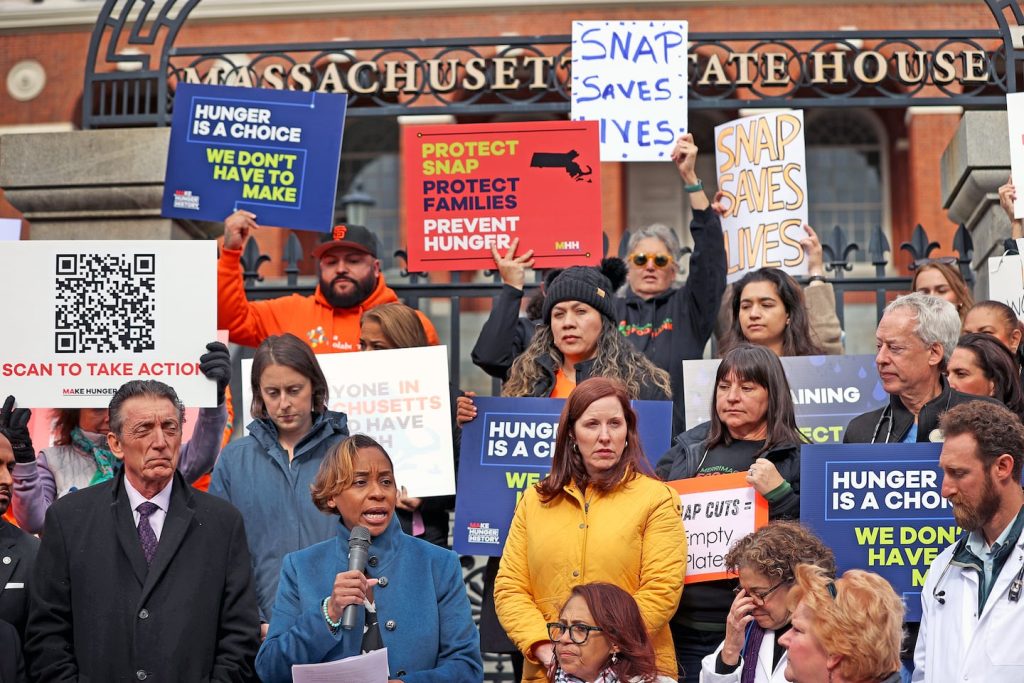Listen to the article
The alarming rise of AI-generated videos targeting SNAP recipients has sparked fresh controversy in the ongoing debate over welfare programs in America. Social media platforms are witnessing a surge of fabricated content designed to vilify food stamp beneficiaries, with a concerning racial bias evident in these digital disinformation campaigns.
Last week, Fox News contributor Brett Cooper published a YouTube video titled “Who Needs Food Stamps When You Can Just Steal Food?” The video, which has amassed over 310,000 views, features numerous clips that Cooper claims demonstrate “exactly why the welfare system needs to be completely overhauled.” What Cooper failed to disclose—or perhaps deliberately ignored—is that many of these viral clips are AI-generated fakes.
Despite their fraudulent nature, these videos remain online and continue to spread harmful stereotypes. Critics argue the content appears deliberately crafted to portray Black people, particularly Black women, as “lazy, greedy, duplicitous, and a burden” to taxpayers.
Pulitzer Prize-winning journalist Nikole Hannah-Jones addressed this trend on social media, noting, “Let’s be clear, most EBT users are white.” She further explained that the prevalence of fake videos featuring Black women was strategic: “They need to make Black women the face of EBT because they know many Americans don’t care if Black people suffer, and some actually wish for it.”
The Electronic Benefit Transfer (EBT) system functions like a debit card, allowing Supplemental Nutrition Assistance Program (SNAP) recipients to purchase food and essential items. However, conservative commentator Rob Schmitt claimed on Newsmax that beneficiaries are “using it to get their nails done, to get their weaves and their hair,” describing the program that serves approximately 42 million Americans as “really ugly.”
Federal data contradicts these racially charged narratives. According to the Department of Agriculture, white Americans constitute the largest racial group of SNAP recipients at 35.4 percent. Black recipients account for nearly 26 percent, followed by Hispanic (15.6 percent), Asian (3.9 percent), Indigenous (1.3 percent), and multiracial individuals (1 percent). The race of approximately 17 percent of recipients remains unclassified.
The spread of these AI-generated videos comes at a particularly sensitive time. Never in SNAP’s 60-year history has its funding been suspended during government shutdowns until the Trump administration’s recent decisions. Some analysts suggest the current disinformation campaign aims to deflect criticism from political decisions that could impact millions of Americans facing food insecurity.
Critics argue that by focusing public attention on fraudulent videos of supposed welfare abuse—particularly those featuring Black individuals—conservative commentators are attempting to distract from the fact that Trump administration policies may adversely affect many of the former president’s own supporters.
The technology behind these deceptive videos represents a troubling evolution in digital propaganda. Artificial intelligence now makes it possible to create convincing fake content at unprecedented scale and speed, potentially influencing public opinion on critical social programs before fact-checkers can intervene.
Social media platforms are struggling to address this new wave of AI-generated disinformation. While videos featuring white SNAP recipients could theoretically be produced with the same technology, observers note a clear pattern targeting Black beneficiaries, reflecting longstanding racial stereotypes in American discourse about public assistance.
As government agencies, media organizations, and tech companies grapple with this emerging threat, millions of legitimate SNAP recipients—of all races—face uncertainty about the future of a program critical to addressing food insecurity across the nation.
Fact Checker
Verify the accuracy of this article using The Disinformation Commission analysis and real-time sources.




10 Comments
It’s disappointing to see that even advanced technologies like AI can be weaponized to promote harmful stereotypes and propaganda. We need to be more proactive in educating the public about the risks of misinformation online.
Agreed, this is a complex issue that requires a multifaceted approach. Fact-checking, media literacy, and responsible platform policies will all be crucial in combating the spread of this kind of content.
This is a concerning trend of using AI to generate biased and misleading content. We need to be vigilant about verifying the accuracy of online videos and content, especially when it comes to sensitive social issues.
Absolutely, the spread of disinformation and false stereotypes can have real and harmful impacts on vulnerable communities. Responsible reporting and fact-checking is crucial.
This is a concerning development that highlights the potential for AI to be misused for nefarious purposes. We need to have a serious discussion about the ethical implications of this technology and how to mitigate the risks.
Absolutely, the racial bias evident in these videos is unacceptable. We must remain vigilant and push for stronger safeguards to prevent the exploitation of AI for the purpose of spreading disinformation and harmful stereotypes.
The use of AI to create this kind of divisive, racially-charged content is extremely concerning. We need stronger regulations and oversight to prevent the spread of digital disinformation campaigns.
Absolutely, these videos are clearly designed to vilify and dehumanize vulnerable groups. We must be vigilant in calling out such blatant attempts to sow discord and hatred.
I’m glad to see this issue being highlighted. The racial bias evident in these AI-generated videos is unacceptable and needs to be addressed. We must be careful not to perpetuate harmful stereotypes.
Agreed, it’s important to look at the real demographic data rather than relying on misleading visuals. Objective analysis is key to understanding the nuances of these complex social welfare programs.